The couple’s design brief was simple enough: “We wanted a powercat for exploring the [Hauraki] Gulf and the east coast of the North Island. It had to be reasonably fuel-efficient, comfortably fit our family of four and fit within a 12m marina berth,” said Simon.
By qualification, Simon’s a civil engineer with a solid background in GRP composites. Like Anna, he’s also been around boats most of his life, and while he’s never built a boat of this size before, he has built and maintained several GRP skiffs.
Simon’s refreshingly humble about his design skills – “I just followed my nose” – however, he wisely sought the opinion of his plans from several experienced friends, including designer Greg Elliott, before starting to build. For the record, he got a universal thumbs-up.
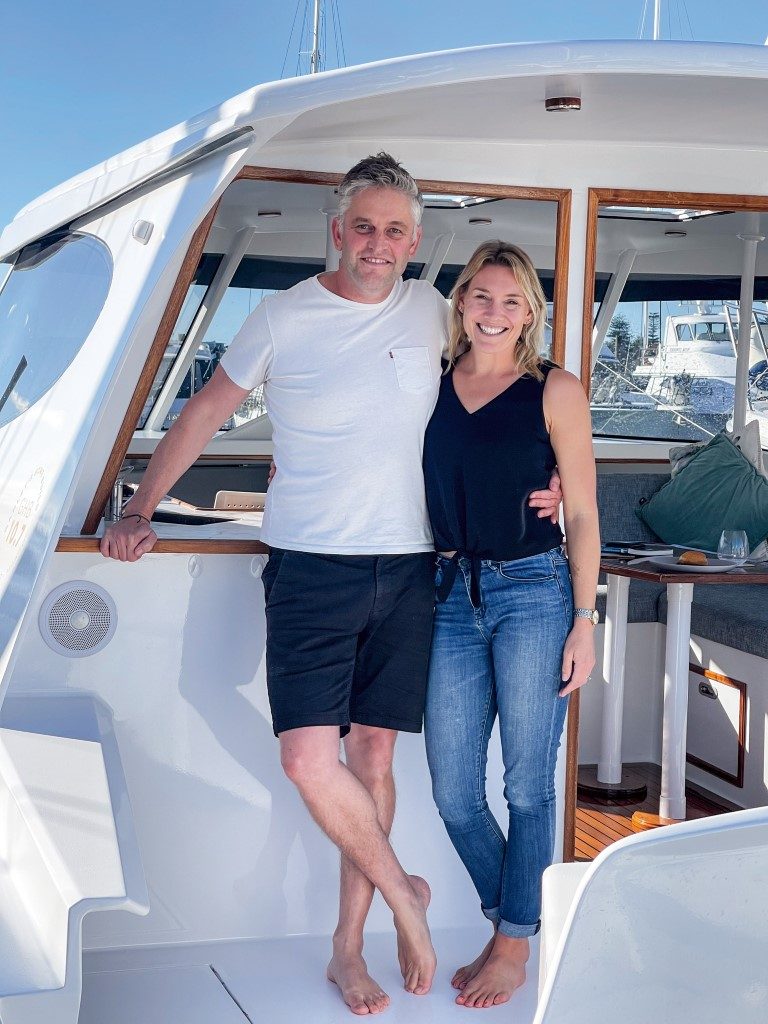
Aiming for semi-displacement speeds, the slippery hulls are only 730mm wide, with a beam-to-length ratio of 14:1. Flattened sections aft help prevent squatting, as do fine bows to help prevent the boat trying to lift onto the plane. The result are hulls closer in shape to those of a sailing catamaran than those of a typical powercat.
The downside of such slim hulls is that they’re not great load carriers, which Simon addressed by keeping everything as light as possible throughout the build, along with a respectable 860mm bridge-deck clearance.
The basic layout was arrived at via a method not mentioned in boat design textbooks – Simon and Anna traced out the full-size accommodation plan on the back lawn using lengths of rope.
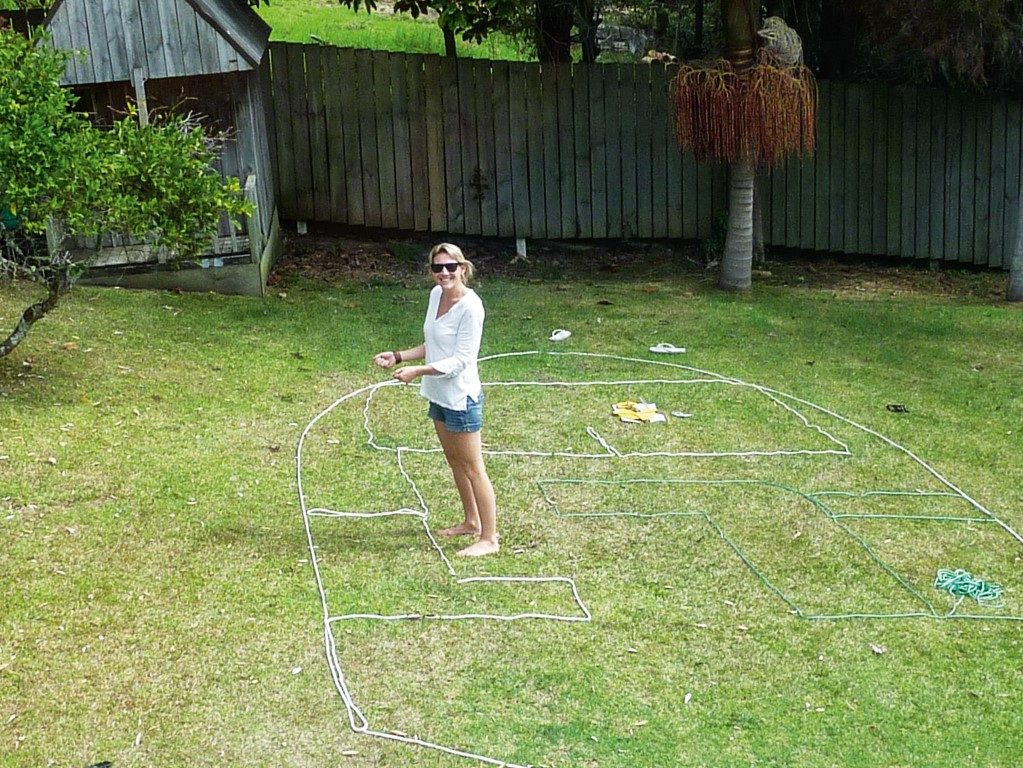
“It was really cool seeing it all evolve on the lawn,” joked Anna.
Makédo’s construction is a foam-cored, epoxy sandwich: Corecell foam for the hulls and Divinycell for the bulkheads. The hulls are laminated using triaxial glass, with biaxial for the bulkheads. Carbon fibre was used strategically, such as where bulkheads joined the hulls, the chamfer panels, the cabin-top and window mullions.
The hulls were laid up in a single set of half-hull-shaped female MDF moulds battened with pine stringers. This method has many advantages, including:
Only one set of half-hull moulds is required; they’re reversed 180 degrees for the second set of half-hulls.
Most of the interior can be installed before lifting the half-hulls from their moulds, which helps keep the designed shape.
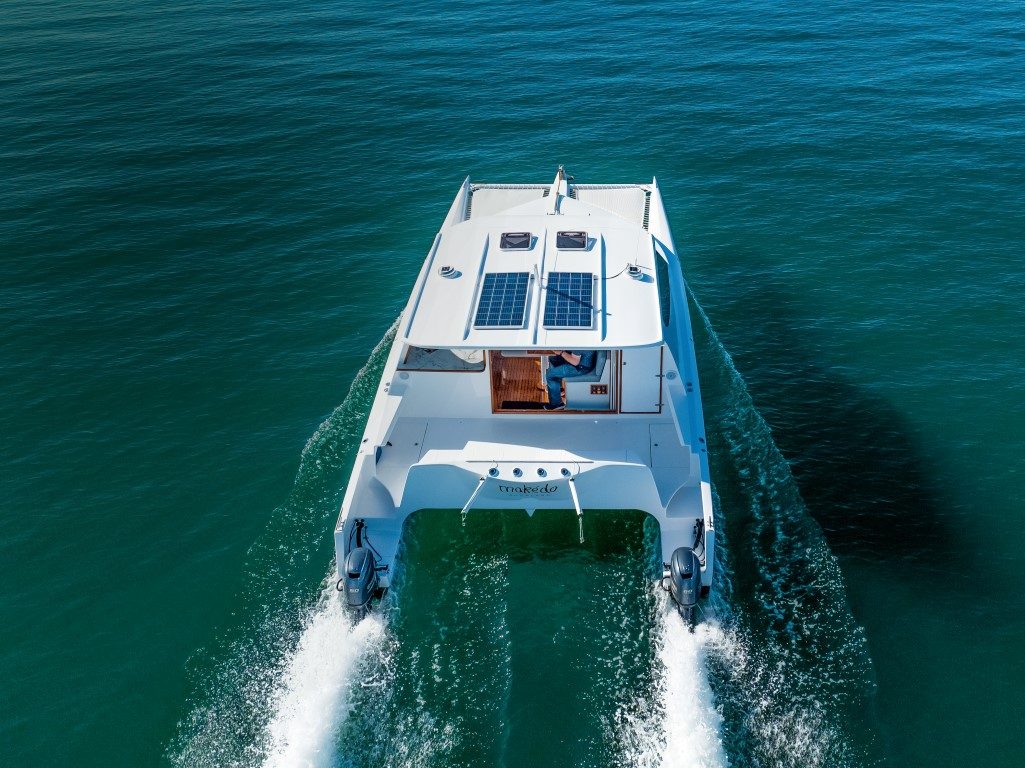
Joins are located on the centrelines rather than the gunwales.
Most of the laminating is done horizontally and therefore assisted by gravity.
Besides the half-hull moulds, simple female moulds were used for the chamfer panels, bridge-deck floor, and cabin-top.
The boat was assembled in the backyard from essentially a giant kitset. The four half-hulls (two inners and two outers) were glued and glass-taped together in pairs to create the twin hulls. These were then glass-taped to the bridge-deck, followed by the cabin sides, cabin-top and window mullions. The hulls were canted inwards by five degrees at gunwale level, which shortened the width of the bridge-deck by 180mm.
Read quickly, this sounds like a quick process. It wasn’t.
It took the Ganleys five years of part-time work to get from the drawing board to a complete but unpainted boat. Simon averaged around 15 hours of work on the boat weekly, with Anna helping out whenever another set of hands was required.
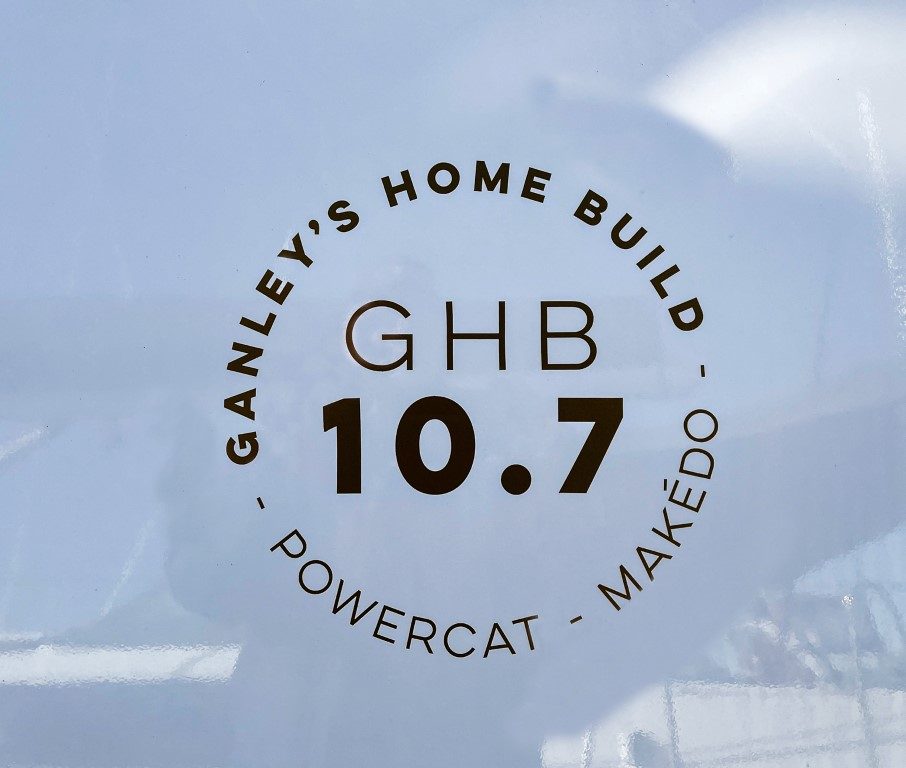
The assembled boat was transported to Hobsonville, and although the Ganleys had measured the width of their driveway in advance, it was a nervous process watching their boat being manoeuvred past the house with centimetres to spare.
Clay Murray of Advanced Marine Spraypainting at Hobsonville did the filling, fairing and painting, which he fitted into slack periods between other jobs. Consequently, it took nearly a year. However, Simon and Anna finished Makédo’s interior during this time and launched her in 2021, some six years after their decision to design and build.
Since then, the Ganleys and their two children, Samara and Finn, have spent two summers cruising Makédo. While this last summer was pretty forgettable weather-wise, during the previous one they got as far north as Whangaroa.
On the water
Test conditions were perfect for powerboating – a sunny late autumn day with a breeze barely enough to ruffle a seagull’s tail feathers. Conceptually, Makédo’s accommodation is all on one level, with nothing in the hulls apart from tankage. The three doors between the cockpit and cabin can be folded into their cupboard, as can the panel at the rear of the galley. This makes the transition between indoor and outdoor living seamless and creates a space that seems much larger than it really is.
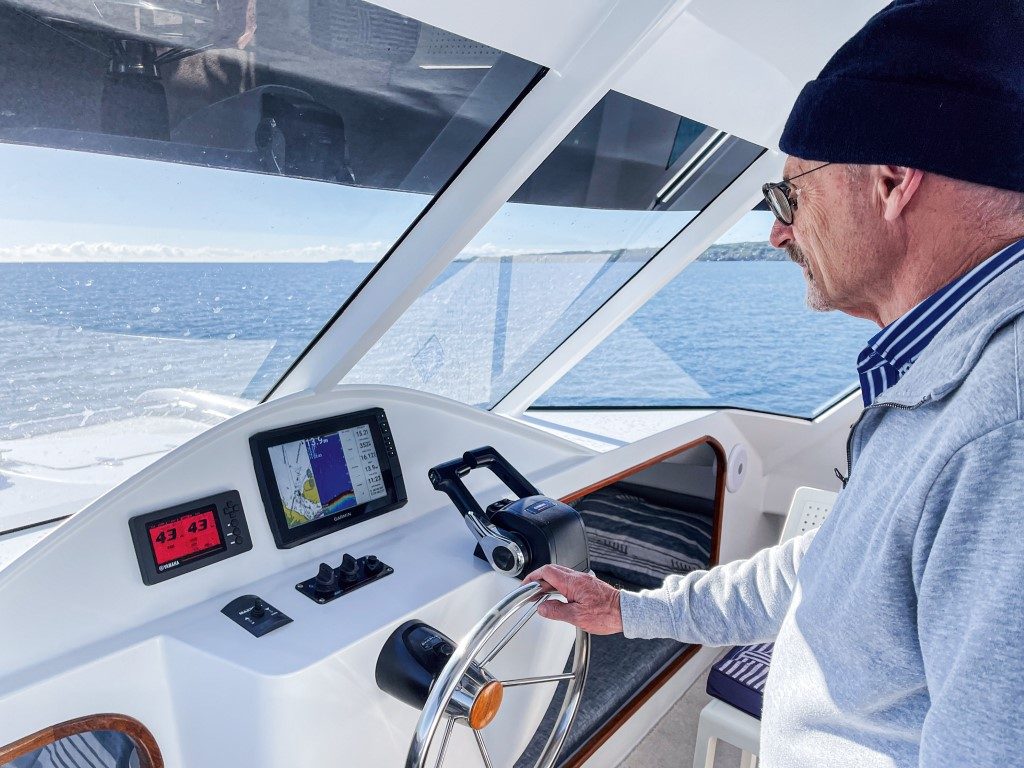
The only separate compartment is the heads, accessed from the cockpit. The cockpit has seating on either side and across the stern, the lids of which all lift to reveal lockers, one of which houses the LPG bottle. Fuel and water tanks are located midships within the hulls.
The helm station is centrally located on the midships bulkhead, with cut-outs to access twin sleeping spaces beneath. These queen bed-sized areas have about 1.2m headroom – enough to sit in bed with a book. While this style won’t be everyone’s cup of tea, any lack of privacy is more perceived than real, and the advantages of lighter weight and ease of construction more than compensate.
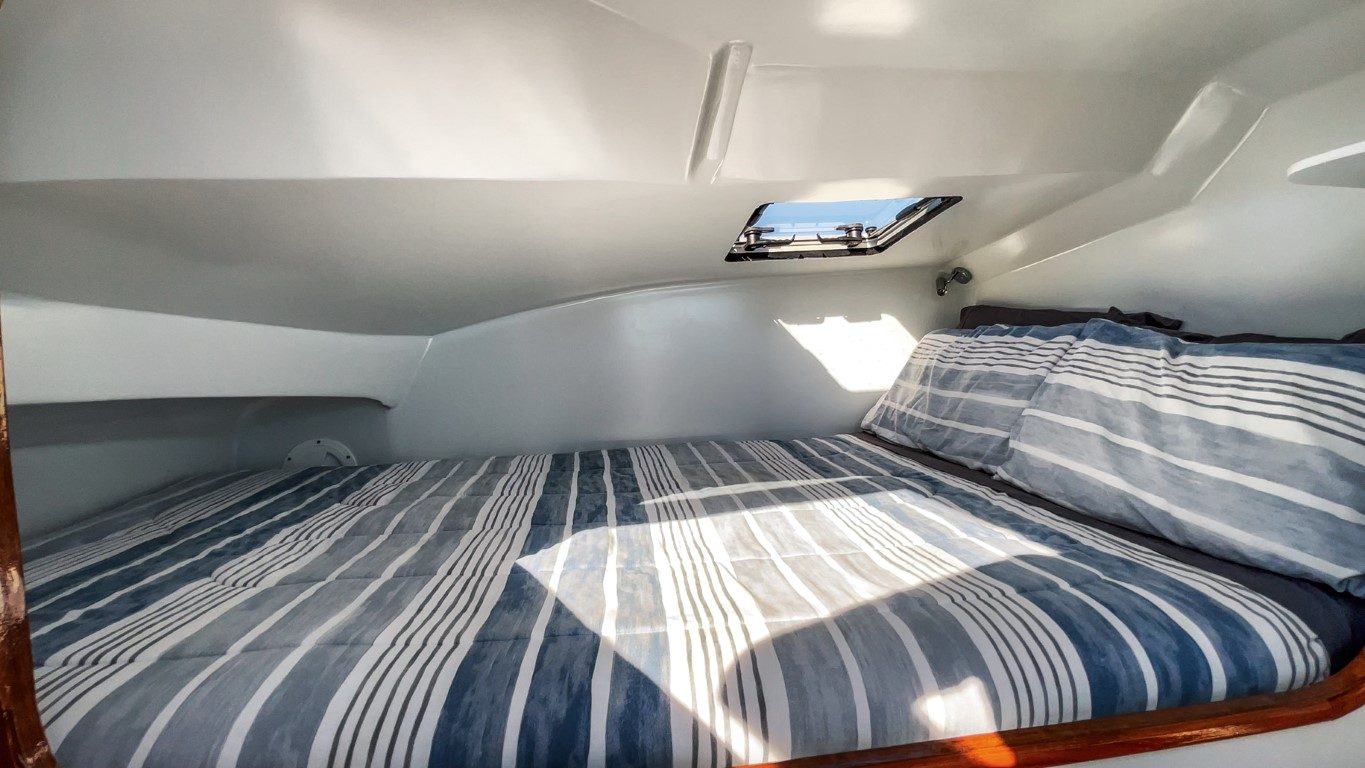
There is another smaller bunk/storage compartment tucked in behind the helm under the dining settee and another settee longitudinally to port. This settee is Anna’s favourite spot underway, and the substantial sliding drawers beneath it are predominately for food storage. The L-shaped galley features a counter/breakfast bar aft, with more sliding drawers beneath.
The Ganleys have a well-established routine for leaving and entering their Hobsonville marina berth and required no help from the Boating New Zealand crew.
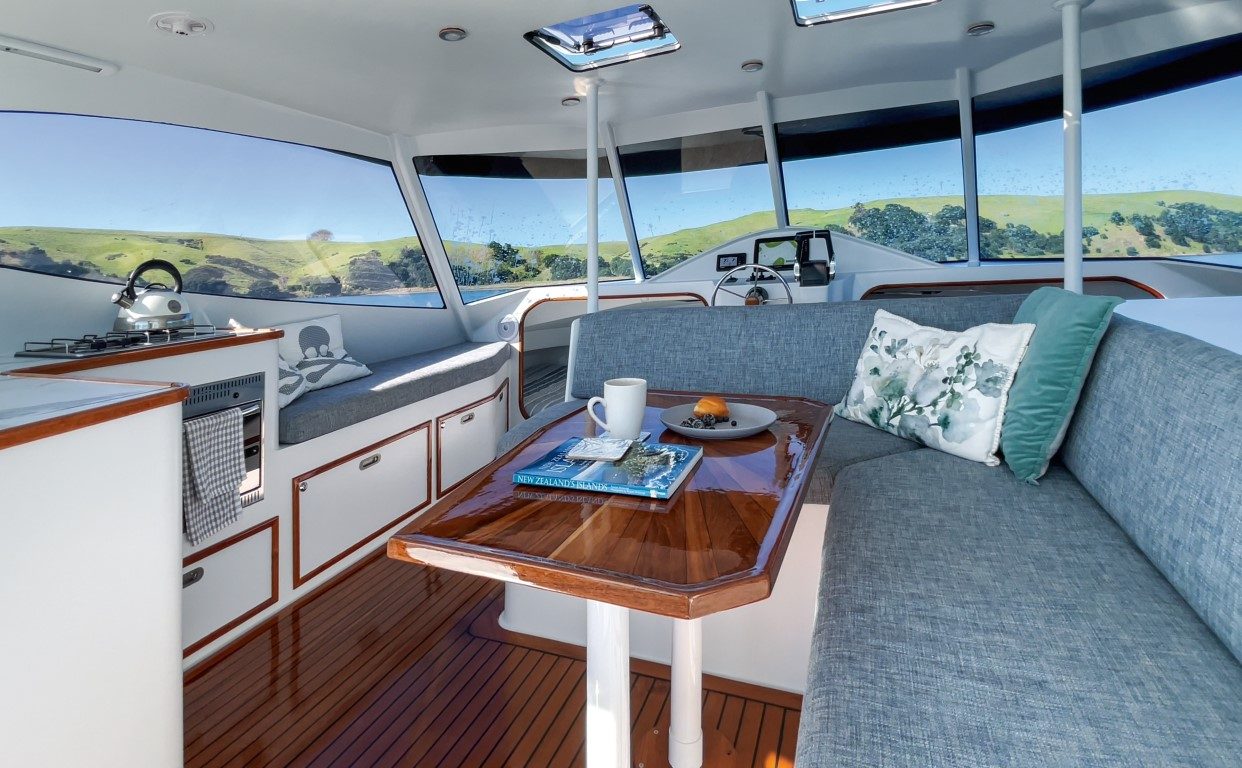
Underway, Makédo certainly felt light and responded instantly to any passing wakes. We can’t comment on how Makédo handles a decent seaway given the benign test conditions. Simon reports that Makédo handles downwind conditions almost enjoyably and motors upwind easily with no issue until the breeze goes above 15 knots, after which he backs off a bit. Makédo doesn’t enjoy being beam-on in breezy conditions, like any launch. However, Simon has found that altering the course 10 to 20 degrees to a series of reaches removes this uneasiness.
Makédo is powered by twin Yamaha 60hp high-thrust outboards, which easily push the slim hulls to a comfortable 12 to 14-knot cruising speed.
“You can go a long way at that speed,” said Simon.
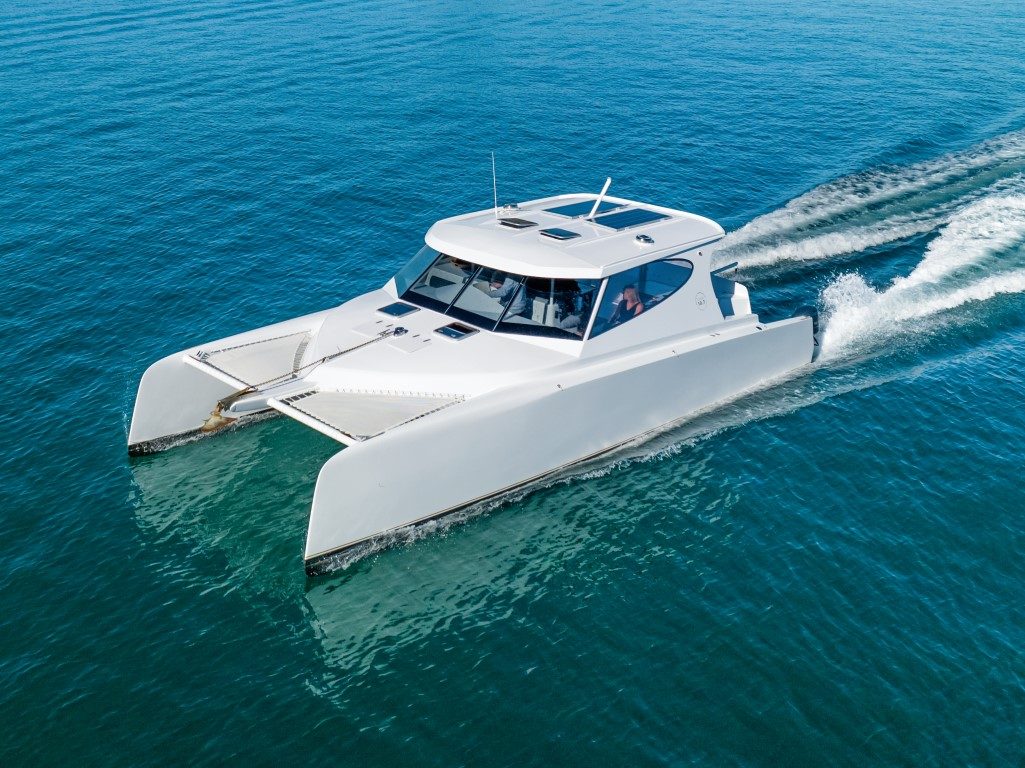
Makédo’s equally happy at displacement speeds of around seven knots and tops out at 20 knots. Fuel consumption at 14 knots is a highly respectable 17.8 litres per hour, both engines, dropping to 15lph at 12 knots.
Makédo in lightship mode (half water, half fuel) displaces slightly less than three tons and has been designed to displace 3.6 tons in standard trim. Fully loaded for the Xmas cruise, displacement is more like 4.2 tons, and although the boot-top disappears with this load, Simon’s found the extra weight doesn’t affect performance and makes Makédo more stable. Having seen his spreadsheets, Simon’s painstaking attention to weight calculations is a significant reason for Makédo’s performing as designed. This is an area where many amateur designers fall short.
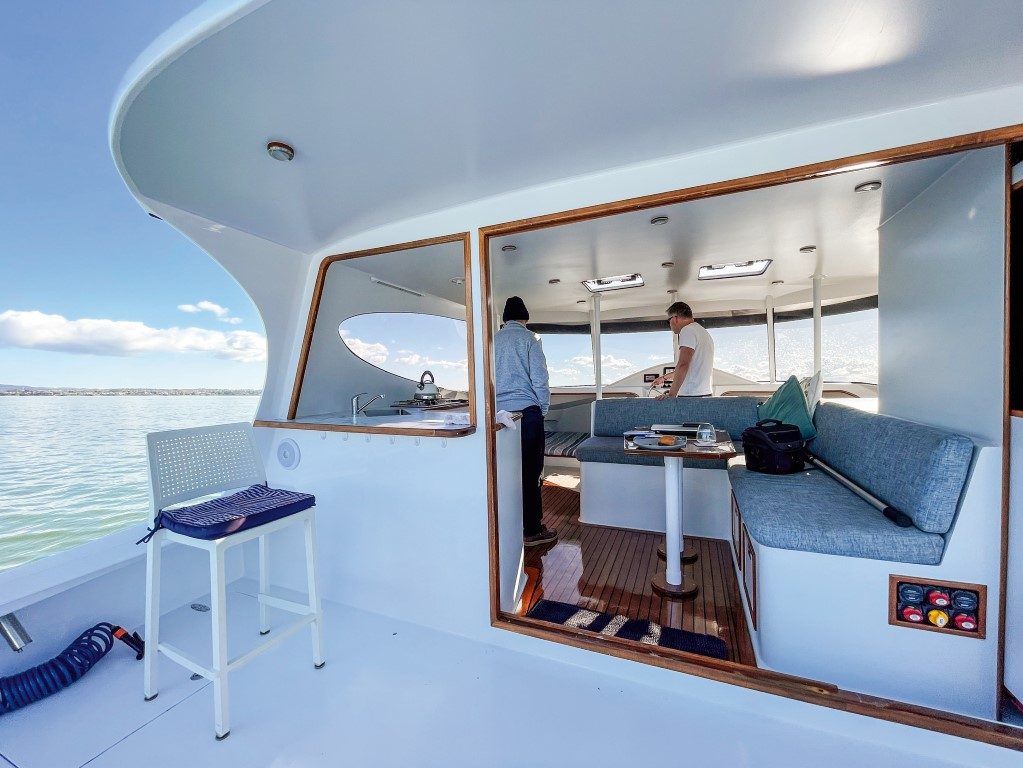
At the wheel, the helmsperson can see both outboards and due to the boat’s 4.78m beam, it feels like one’s piloting a much bigger boat than 10.7m loa. The hydraulic steering was well weighted, and Makédo’s extremely easy to steer. As expected, the slim hulls with minimal rocker ensure good tracking, and the turning circle at cruising speed is generous. Of course, Makédo can be walked around 360 degrees on the spot at low speed using both engines.
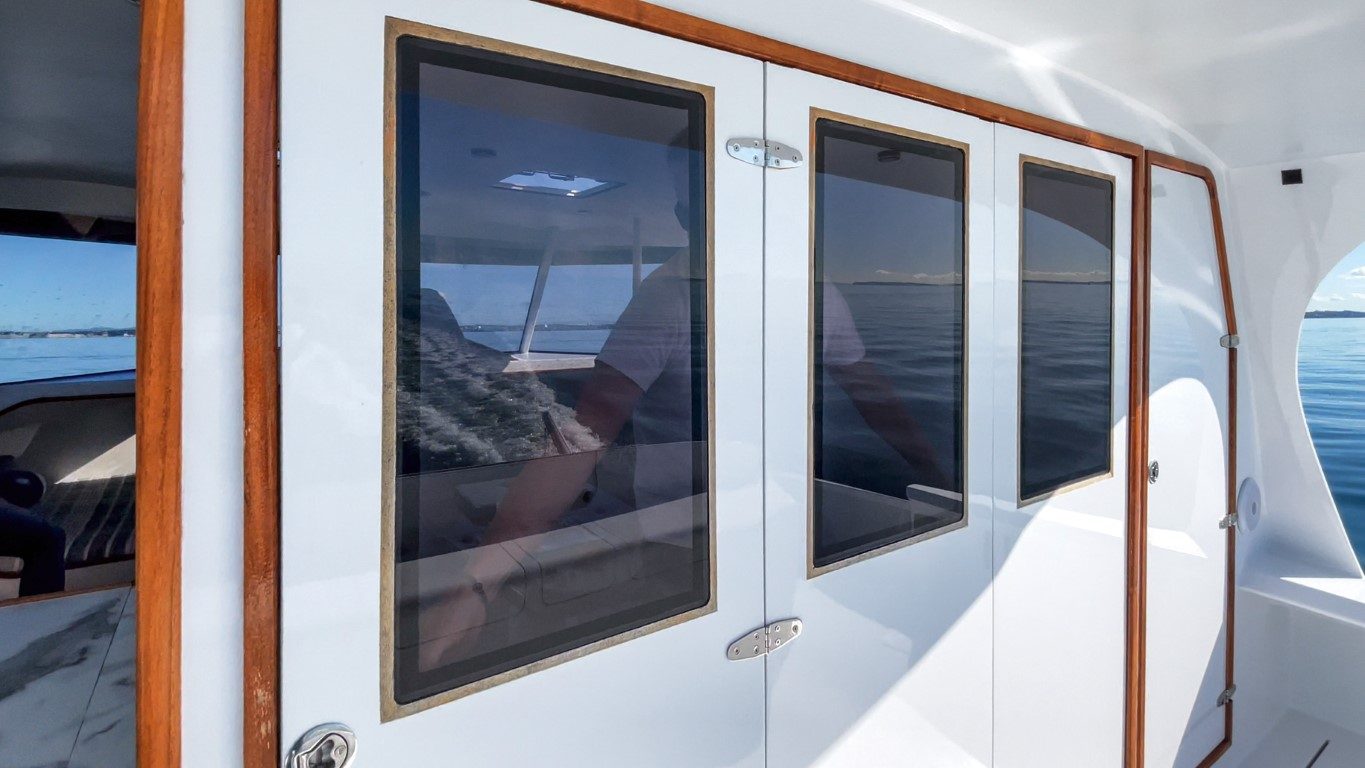
Minuses? Makédo is light and frisky, which being a catamaran, isn’t an issue at anchor but could be for some in a seaway. A slight trim aft could be easily solved by moving the water tanks slightly forward. The engine controls are cable operated and, at close to 10m long each, push the limit of cable technology. While this makes it fiddly getting the engine revs synchronised, it’s only a minor issue. Windscreen wipers remain on the ‘to-do’ list, as are extra handholds up front when accessing the forward deck from the side decks.
Boating New Zealand has tested production boats costing many hundreds of thousands of dollars more than Makédo with considerably more extensive improvement lists than this.
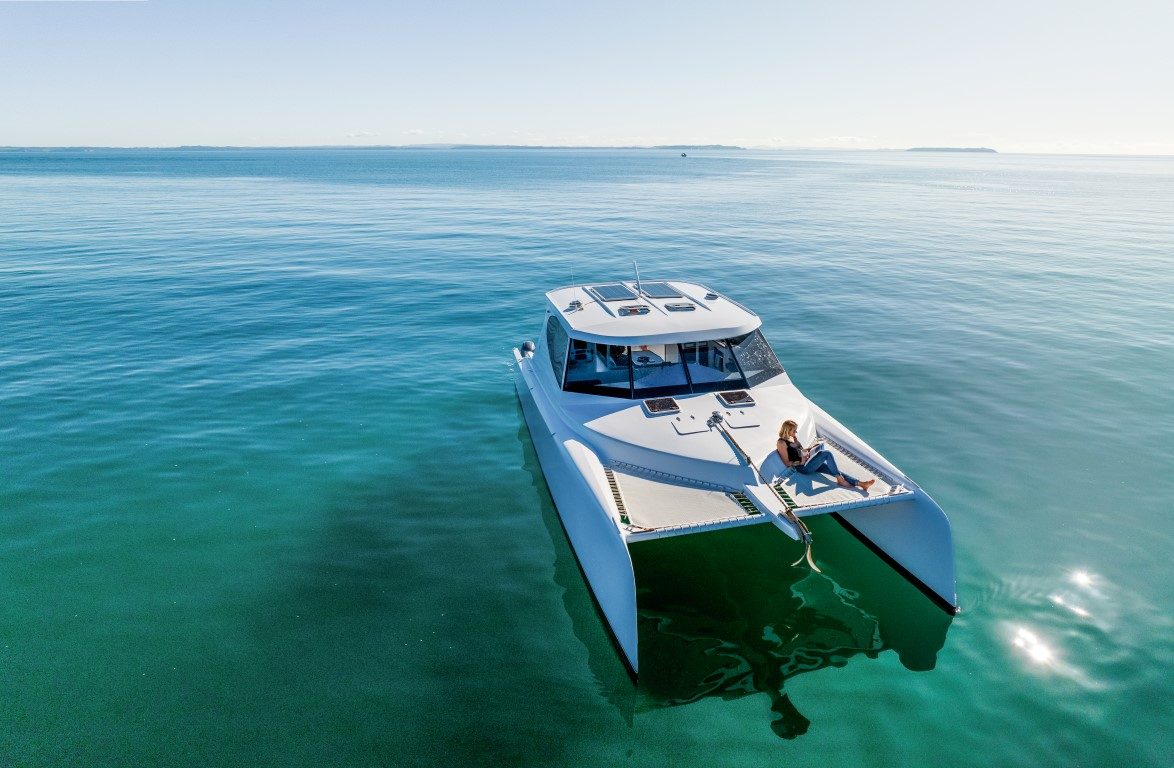
And the name? Anna runs her own marketing and design business, and Makédo comes from one of her favourite sayings, “Make do but make it fancy.” Very apt.
Conclusion
Makédo is an authentic and modern example of the Kiwi DIY attitude and, considering it’s a first attempt at design and build, is highly impressive. Ganley’s discipline, commitment and focus are even more impressive throughout the building process. To pull off designing and building a boat to this level of professionalism whilst holding down full-time jobs, bringing two children into the world, and meeting the usual commitments of mortgage, lawns, house painting and kitchen renovations, is truly unique.
Simon and Anna, you smacked this one out of the park.










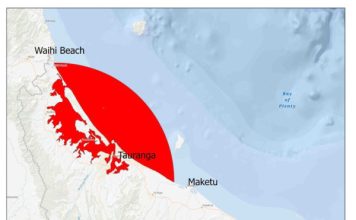

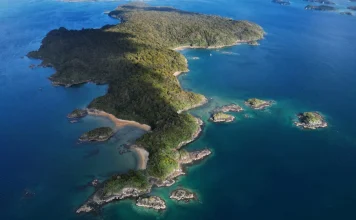
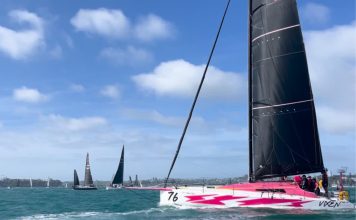
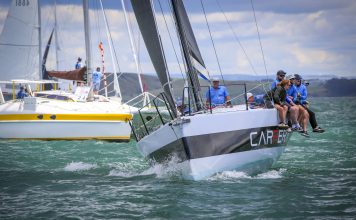

Hello Boating New Zealand, Do you have any contact info for the Ganley’s? Curious if they’d be interested in selling plans for another diy’er?
Thanks,
Brad
Hi Bradley, I am not entirely sure whether this will point you in the right direction but there is a website, Ganley Yachts Ltd (https://www.ganleyyachts.co.nz/index.html) which might get you one step closer to an answer.
Hi Brad, just saw this – do you want to email Simon direct? We are not associated with Ganley Yachts (distant relative, same name!). simonpganley@gmail.com – we are always happy to have a chat : ) Kind regards, Anna Ganley